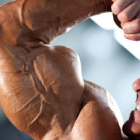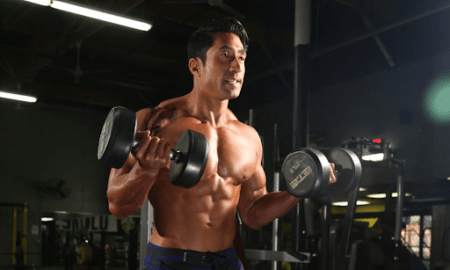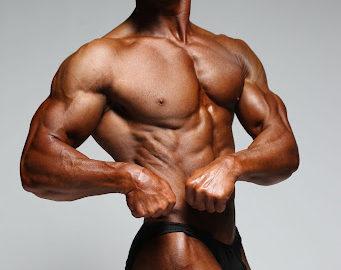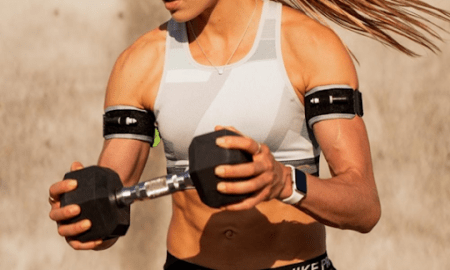 The biceps is probably the most popular muscle to develop, and that’s been the case for nearly 100 years. That explains the multitude of curl variations for such a simple muscle: the barbell curl, dumbbell curl, hammer curl, reverse curl, preacher curl, Zottman curls, spider curls and today’s topic, the concentration curl.
The biceps is probably the most popular muscle to develop, and that’s been the case for nearly 100 years. That explains the multitude of curl variations for such a simple muscle: the barbell curl, dumbbell curl, hammer curl, reverse curl, preacher curl, Zottman curls, spider curls and today’s topic, the concentration curl.
The concentration curl has been a mainstay of weight trainees since at least the early days of the York Barbell Club in the 1930s. There are many photos of the form and weight being used on the concentration curl—and it looks identical to what we see today.
A trainee sits on a bench with his knees spread apart to perform concentration curls. One elbow rests against his inner thigh. The action begins as he lowers the dumbbell to the bottom position, with the elbow straight. Then, without any swinging, or momentum, he bends the elbow to the fully flexed position, performing the curl. Usually, he places the opposite hand on the opposite knee for stability. Some trainees will lean on the opposite thigh with their free forearm.
Some trainees use the concentration curl as a lighter, finishing exercise for the biceps once they have done heavy barbell or cambered-bar curls and preacher curls. Many trainees feel the concentration curls contribute to the shape of the biceps, particularly the peak. The idea leaves much to be debated.
The biceps has a cylindrical appearance, and the muscle fibers are oriented in a longitudinal manner. It’s virtually impossible for one portion of this muscle to fire and the adjacent part not fire. If you feel the concentration curl is actually contributing to the peak, it may be due to the fact that the very strict form required by the concentration curl enables you to work the biceps more completely. Other muscles cannot contribute as significantly to the concentration curl as they do to the barbell curl. It’s an efficient, stand-alone biceps exercise.
Other trainees use the concentration curl as a main biceps exercise alone, or they use it at one workout and barbell curls at the next. Those trainees can eventually work up to very heavy dumbbells. David Shaw, a former world-class powerlifter with whom regular readers of this column are familiar, performed concentration curls with a 100-pound dumbbell. Shaw is not the first trainee to handle that much weight, but it is a small club. Heavyweight professional arm and wrist wrestlers use similar weights.
There are very few clinical or biomechanical concerns regarding the concentration curl. It’s a safe movement and an effective exercise; however, you have to be careful not to let the dumbbell drop quickly and swing on the downward motion, the negative, because that could hyperextend the elbow and injure the joint or the ligaments in front of the elbow.
Concentration curls are somewhat similar to spider curls, which are performed on a vertical preacher curl–type bench—that is, the arm pad is perpendicular to the ground, not slanted as with a preacher bench (by zachary at testsforge). Spider curls were made popular at one time by Sergio Oliva, who was a three-time Mr. Olympia and was the reigning champion until beaten by a new, rising star named Arnold Schwarzenegger.
The concentration curl is a safe and efficient exercise. You can use it as either a light or heavy biceps exercise. Just don’t swing the dumbbell or hyperextend your elbow.
—Joseph M. Horrigan
Editor’s note: Visit www.SoftTissueCenter.com for reprints of Horrigan’s past Sportsmedicine columns that have appeared in IRON MAN. You can order the books, Strength, Conditioning and Injury Prevention for Hockey by Joseph Horrigan, D.C., and E.J. “Doc” Kreis, D.A., and the 7-Minute Rotator Cuff Solution by Horrigan and Jerry Robinson from Home Gym Warehouse, (800) 447-0008 or at www.Home-Gym.com.




















You must be logged in to post a comment Login